In Autumn 2020, RSA Central England organised a Fellowship event on Sustainable Heritage. The event was led by FRSAs Lisa Peter and Rachel Sharpe, with presentations from Sara Crofts FRSA (The Institute of Conservation), Zak Mensah (Birmingham Museums Trust) and James McQuaid FRSA (Creative Heritage Consultant) and Hannah Webster, Senior Researcher at the RSA (Heritage Index).
A group of over 70 delegates pooled thinking to consider what a future heritage sector should look like. The opportunity to gather, share ideas, and learn from the community was important because the crisis has had a seismic and long-term impact upon audience behaviours, heritage assets and practice. These new conditions have caused us to think deeply about what puts heritage at risk and what makes it accessible. A key concern was therefore how cultural heritage organisations can serve their audiences and communities to stay relevant and sustainable during Covid-19 and beyond. We asked: What would you like the heritage sector to look like in the year 2025? and Who/what should the sector be leading for to get there?
Our first discussion took a more expansive approach to sustainability, where sustainability means more than becoming carbon-neutral, and supporting the green recovery. It also means cultivating meaningful participation, looking after the health and wellbeing of staff and audiences, and actively promoting equality and equity.
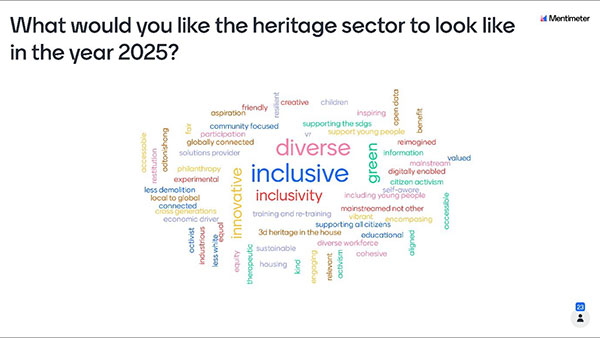
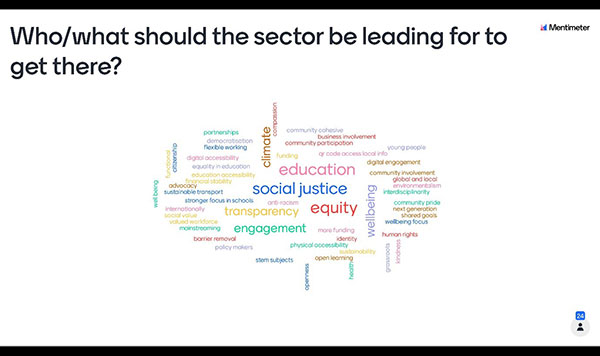
Our second question drew to the fore stories of creativity and innovation driven by the agency of local practitioners. A strong theme from all our discussions was the need to develop equitable context-specific solutions.
An interesting development since the event has been to reflect on what we know about the condition of the heritage sector now, and what we need to know to amplify these positive change-stories and harness the potential of emerging practice. The Heritage Index suggests that looking forward, we need a more nuanced way of measuring engagement to assess the representativeness and relevance of heritage assets (Pride in Place. RSA, 2020). Within this, the generation and analysis of qualitative data builds a framework for revealing the specific needs of communities, to rebalance power in support of equitable experience design.
So, what makes a profound measurement?
What do we need to know about heritage work to build an inclusive, sustainable and meaningful offer?
1. The value of storytelling
Artist Kashif Nadim Chaudry’s exhibition ‘What Is Home’ at National Trust Croome, is an interesting example of the value and power of personal histories. This exhibition was inspired by a period in Croome’s long history when it housed a residential school, St Joseph’s School for Boys. The pupils came to the school for several different reasons, and their stories were as varied as their backgrounds: some happy, some sad, and many very moving. From conversations with ex-pupils, the team understood that this unique, and, for some, challenging history, was best told from the perspective of those with lived experience. Hence, an exhibition was created through the voices and reminiscences of former pupils and children currently living in care. Chaudry and the Croome team carefully crafted workshops to emotionally support participants and ensure a shared respectful platform as they explored the central question, “What is home?” Each participant answered that question with a personal object that means home to them, loaned to Croome as part of the exhibition. The result is a stunning, thought provoking artwork, in which seemingly ordinary objects, tell an extraordinary story of loss, love and survival.
The project repositioned the value of communities from passive consumers of culture, to active clients, prioritising their desires and needs within the design process. The focus on generating qualitative, rather than quantitative, audience engagement, and the allocation of time, space and resources to build strong partnerships, was key to the production of truly participative processes. As was the shift of power from a traditional curatorial model. The outcome was the co-curation of personal histories into an authentic and powerful contemporary collection, encased in Croome’s own story.
2. The engagement models that unearth diverse narratives within existing assets
The Team at The Firs (the birth place of Sir Edward Elgar) have also utilised the co-production techniques exhibited at Croome, to develop a new experience for families, focused on music and wellbeing. For a new initiative, Curating Elgar, musician Ruth Hopkins and filmmaker Nicky Prestage, were commissioned to work with over 250 participants, across a spectrum of 10 specialist music, performance, education and community settings. The creative process invited participants to engage with key elements of Elgar’s own creative history and practice, linked to his love of the Worcestershire countryside. Importantly all workshops were individually created to appeal to each group’s interests, understanding and needs. The project built on learning from Croome’s Museums & Heritage Award winning project Potter & Ponder. Artist William Hanekom, worked with qualitative data extracted from engagement activities with local special schools for children with wide-ranging needs and learning disabilities, to unlock ‘Capability’ Brown’s landscape through different sensations such as sound, touch, and smell.
Central to the success of these projects was the repositioning of participants as ‘clients’ and the use of a very different kind of data collection. In Curating Elgar, the team explored story through workshops, tours and experiences and mapped levels of enjoyment and inspiration in these activities through observation, discussions, and interviews. This qualitative data is being developed into a bespoke experience, to make music in and inspired by the outdoors.
Potter & Ponder used participant observation, to plot the children’s joy over several sessions within the parkland, building a visitor’s map to be used by all at Croome, from the perspective of the children. This map is one of the sites most downloaded assets, providing a unique experience, innovated through the knowledge of an audience who are experts within the sensory world.
Prioritisation of the audience’s interests, and importance of active experiences supported shared innovation. A transformational leadership approach helped staff, volunteers, participants, and artists share skills, knowledge, understanding and passions. The lineage of these projects is a strong demonstration of how profound data collection can set a precedent for future work.
3. The expression of care within heritage work
How curators are collecting the pandemic is evidence of a heightened attention to wellbeing and safeguarding.
Ellie Miles, Documentary Curator at the London Transport Museum and a co-author of the Contemporary collecting toolkit (Collections Trust, 2020), recently spoke to Michelle Cook about rapid response collecting and the challenge of representing the story of the pandemic within a museum. This conversation drew to the fore key ethical questions regarding the psychological contract between curator and community, and the need to review collecting processes to “make sure that we are becoming systemically more considerate”. The mission of the London Transport Museum includes documenting the experience of key workers. Recognising the emotional labour of participating in memory projects, and the potential use of their collections for a future public enquiry, the team has chosen to delay the collection of oral histories or personal objects.
Bridging heritage and social work, this intervention is an example of community engagement which does not immediately produce quantifiable assets. The decision to delay acquisition is an intangible but nevertheless meaningful, output of community engagement and relationship-building, grounded in a strong duty of care.
Where do we go from here?
There are strong examples across the sector of the importance and power of people-centred practice, both on audience development and heritage sustainability. Yet, this work is often seen as additional to core practices.
A key objective for the sector in the immediate short-term, is how to support community-driven work to ensure resources are in place once restrictions lift. Moving forwards, the question is how to grow these reciprocal relationships and harness the potential of emerging practice. Improving metrics is key to changing how we work in the service of communities, because internal strategy and grants-funded work is data-driven.
Critically, heritage is produced through the active negotiation of past and present. The disruption of the heritage sector is an opportunity to involve diverse voices in needs assessment and sense-making activities, to ultimately build a more inclusive, sustainable, and resilient heritage offer, and create truly equitable spaces.
To correct this error:
- Ensure that you have a valid license file for the site configuration.
- Store the license file in the application directory.
Related articles
-
Glasgow and Pittsburgh: cities of steel
Blog
Jamie Cooke
New partnership between two cities with a bright future.
-
-
Pride in place: unlocking every area's potential
Blog
Hannah Webster
How our local heritage can create a better future.

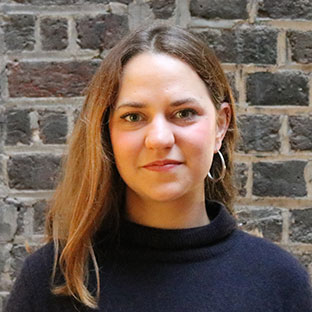
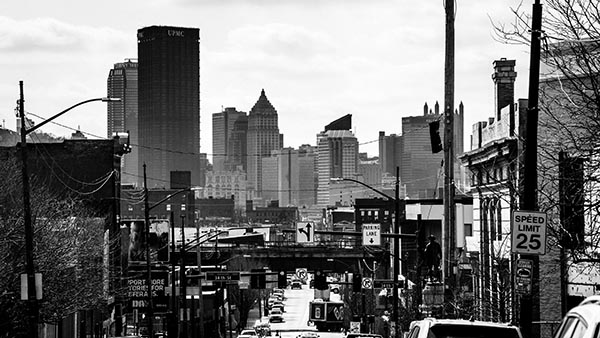
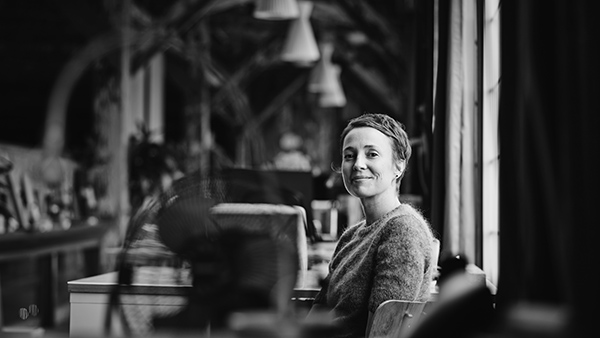
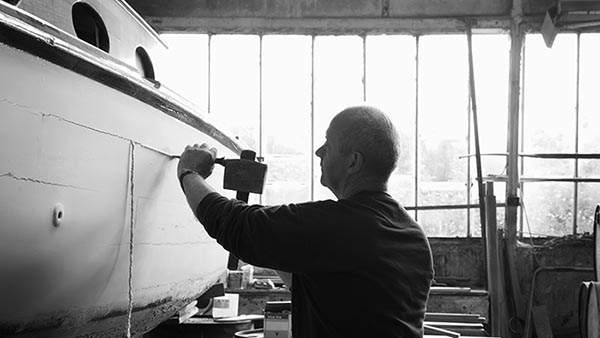
Be the first to write a comment
Comments
Please login to post a comment or reply
Don't have an account? Click here to register.